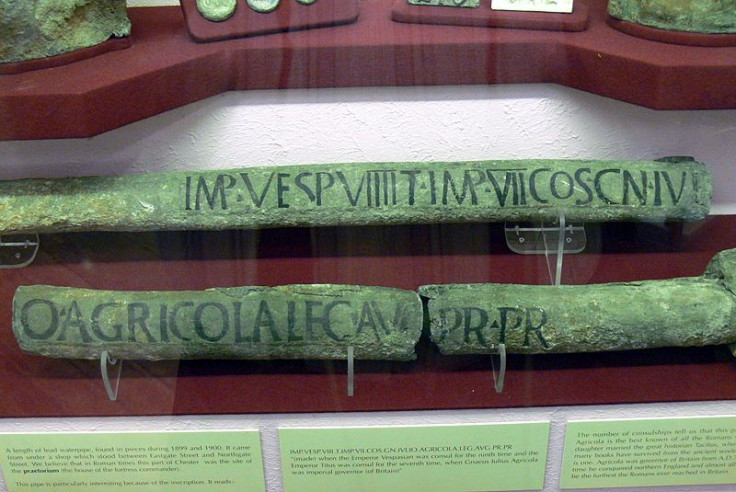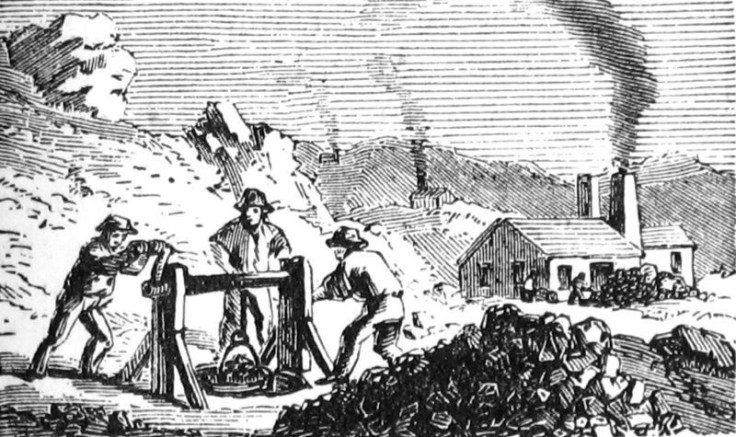A Brief History Of Lead Poisoning: From Ancient Rome To Michigan, Lead Has Plagued Our Bodies For Centuries

The water crisis in Flint, Mich. sparked a national outrage over the town’s water quality and high lead levels, which predominantly affected children in poverty-stricken areas. But shortly after Michigan’s crisis came to a head, it became clear that poor water quality and lead poisoning wasn’t confined to just Flint — it was happening all over America, in cities like Baltimore and Portland, Ore., affecting some 2,000 water systems that provide water to six million people combined.
Lead poisoning can be deadly. Even just a tiny amount of the neurotoxin can accumulate in tissues and be enough to cause cardiovascular, immune, nervous, and behavioral problems — especially in children, whose developing brains and bodies happen to be far more vulnerable to its effects. Lead is toxic to nearly every organ in the body, and gradual exposure can lead to learning disabilities later on in life. Acute lead poisoning, meanwhile, can cause muscle weakness and tingling, pain, nausea, diarrhea, and weight loss. In severe cases, victims might experience shock, kidney damage, or death.
Lead poisoning is a public health concern that modern America must grapple with, but lead is far from being a new environmental toxin. In fact, it’s been deeply entrenched in human societies and civilizations since ancient Rome, and has been poisoning people ever since. Here’s a brief history of lead poisoning, and how we got to where we are today in the United States.
ANCIENT

7000-1000 BC. Lead, which is found in mineral deposits in the earth’s crust, is believed to be one of the first metals to ever be smelted, or extracted from its ore through the use of heat. Because of its malleability and accessibility, lead was commonly used among various ancient peoples in decorations, jewelry, currency, writing materials, and construction.
500 BC-300 AD. It was the ancient Romans, however, who brought lead use to an all-time high in the ancient world. The Romans considered lead as the king of metals, and used it commonly in face powders, cosmetics, and paints. In fact, “crazy as a painter” was a common phrase that described the strange behavior of artists who were lead poisoned. It was also used as birth control, in plates, cups, and pitchers, lead coins, and even as a condiment for seasoning food. Lead was, in essence, used nearly everywhere in ancient Rome — particularly because it was a plebeian element, accessible even to the poorest of the poor.

But perhaps the extensive irrigation and plumbing systems that veined through ancient Rome were the greatest source of lead. The word "plumbing" comes from plumbum, the Latin word for lead. Julius Caesar’s architect and engineer, Vitruvius, wrote that “water is much more wholesome from earthenware pipes than from lead pipes. For it seems to be made injurious by lead, because white lead is produced by it, and this is said to be harmful to the human body.” Still, lead was so popular that it was nearly impossible to stay away from it; lead acetate was even used as a sweetener for foods and wine, though this often resulted in gout and illness.

100 AD. Dioscorides, a Greek physician who was employed as a doctor in the Roman army, was also one of the first to note lead’s toxic effects on the human body and mind, stating that it made the mind “give way.” Later on, historians even hypothesized that lead poisoning was to blame for the fall of the Roman Empire (though generally, this has been refuted). Indeed, although the Romans were aware of the hazards of lead, the elite and the powerful still drank gallons of wine contaminated with lead, which many historians believe resulted in widespread madness, sterility, and gout seen in the Roman elite.
MEDIEVAL
After the fall of the Roman Empire, lead mining decreased in Western Europe, though it continued throughout South and East Asia. Still, lead remained ubiquitous in Europe, used frequently in alchemy, wine adulteration, stained glass window frames, and roofs.
In the Middle Ages, the nobles and the wealthy were the most exposed to lead, as it was found in most luxuries, like glazed cups, plates, and utensils. Eating off lead plates slowly caused chronic lead poisoning, and resulted in lower intelligence levels in children, according to a recent study. The study examined 207 medieval skeletons from six cemeteries throughout northern Germany and Denmark, and found that urban dwellers had the most lead in their bones, while rural folk had very little to none. This hinted that cities were the greatest sources of lead, where wealthier people could get their hands on lead-glazed items or leadened foods.
In addition, Renaissance painters were exposed to lead-ridden paints. It’s believed that the famous artist Caravaggio had gone mad, and eventually died, from lead poisoning. In 2010, researchers examined his bones with carbon dating and DNA checks, and concluded that he had incredibly high levels of lead in his body, likely due to his paints.

MODERN ERA
In the modern era, lead exposure and poisoning began to make the switch from the rich to the poor. Lead poisoning cases in adults were occupational by nature, with many people being exposed to lead in the workplace through fine lead dust, fumes, or lead paint.
1621. In America, lead mining had begun almost as early as settlers had arrived in Virginia.
1690s. A town in Germany known as Ulm became famous for being perhaps the first to ban the use of lead, due to the fact that the inhabitants were suffering from colic and severe stomach cramps all due to the lead-adulterated local wine.
1872. Dr. A.B. Garrod wrote in The Lancet that many workers in white lead mills in London were prone to lead poisoning, and hair dyes also contained the toxic metal during this time.
1921. The Industrial Revolution brought lead use to a whole new level never seen before, exceeding even that of ancient Rome. The U.S. became the leading producer of lead, with the biggest sources being in building construction, paint in children’s toys, pesticides, and gasoline. One man in particular, chemist Thomas Migley Jr., developed a way to make engines at General Motors more efficient by adding in tetra-ethyl lead. Not heeding concerns about lead’s toxicity, Migley pushed for the production of ethyl in 1923. One German scientist even warned Migley that lead was a “creeping and malicious poison,” and that it had killed one of his fellow scientists. Later, GM’s ethyl plant in New Jersey was closed down after some workers experienced subsequent mental illness and death from the lead. Migley himself wasn’t immune from its ill health effects; ethyl was termed “looney gas.”
1925. Due to the lead poisoning cases in industry workers, and the media terming ethyl “looney gas,” the Surgeon General of the U.S. banned it temporarily and appointed a panel to investigate its adverse health effects. However, the panel wasn’t given enough time “to produce detectable symptoms of lead poisoning,” it wrote, and ultimately ruled that there were no grounds to prohibit ethyl gasoline. As a result, the toxic fuels polluted America’s air for nearly 50 years.
1970s. Despite the fact that lead’s toxicity had been known for thousands of years at this point, it was just too useful and accessible a substance to ban completely from most products. But the 1970s brought a change in the way Americans thought of lead, thanks largely to psychiatrist Herbert Needleman, who found that even low levels of lead severely damaged the brains of infants and children and led to lowered IQs, an inability to focus, and increased risk for mental illness later in life. His research was the catalyst for the Centers for Disease Control and Prevention and Environmental Protection Agency to issue guidelines to reduce lead poisoning in children, which ultimately led to the phasing out of leaded gasoline (in 1974) and lead paint.
1993. Though acute lead poisoning was more uncommon by now, low-level exposure was still widespread. In 1993, the National Academy of Sciences confirmed that even very low doses of lead caused neurobehavioral problems.
Today, some four million households, across the U.S. are exposed to high levels of lead, says the CDC. Most of these are homes to children.



























